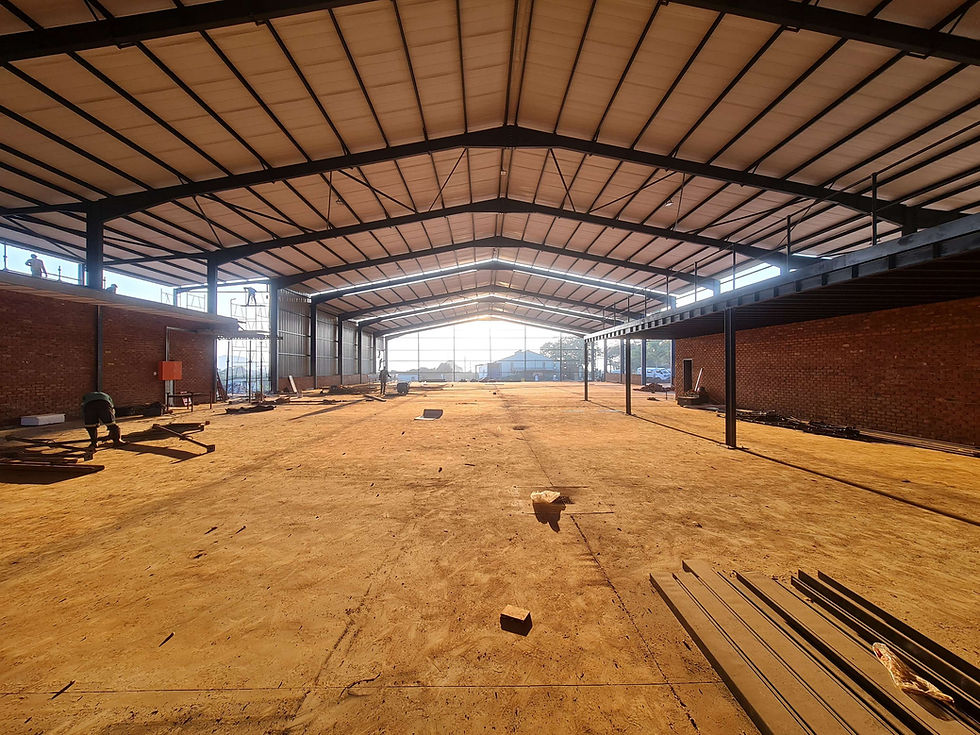Cost Control in Construction: Strategies for Staying on Budget
- LTM Engineering

- Apr 30, 2023
- 4 min read
For any construction project, staying within budget is an absolute must. It may sound like a daunting task given the complexity of such projects and their associated costs, but cost control in construction doesn’t have to be difficult. With careful planning and proper management strategies, you can manage your construction project budget successfully and ensure that you don’t put yourself at financial risk or miss important deadlines. In this blog post, we will cover best practices for cost control in construction – from setting up a cost control system to utilizing daily logs and tracking sources – so that you can remain on target while maintaining quality standards throughout the entire duration of your project!

Establish a budget from the start and set clear expectations regarding construction project costs
Beginning a project can be exciting, but it is also the time to establish a budget and set expectations with your team members and clients. Designate an individual or team to be in charge of monitoring budgets, track expenses, and provide regular updates to stakeholders. It’s important to be realistic when setting up a budget – make sure you account for all types of possible contingencies that could arise during the construction process.
Create a tracking system to monitor expenses throughout the construction project
Keeping track of expenses throughout a project can be a daunting task, but it is essential for staying within budget and ensuring the success of the project. Creating a tracking system can help to simplify this process and make it more manageable. With a consistent and organized system in place, team members can easily input and monitor expenses, while project managers can quickly access and analyze the data. By implementing a tracking system, project stakeholders can make informed decisions about budget allocation, identify areas for cost-cutting, and proactively address potential issues before they become major problems. With the right tools and approach, creating a system to monitor expenses can be a key factor in achieving project success.

Utilize cost-saving strategies like using recycled materials and purchasing in bulk
In today's economy, every penny counts. That's why businesses of all sizes are looking for ways to cut costs without sacrificing quality. One key strategy is utilizing cost-saving techniques like purchasing in bulk and using recycled materials. These measures not only boost a company's bottom line, but also help reduce waste and benefit the environment. By buying in bulk, businesses can often negotiate lower prices from suppliers and reduce delivery costs. Using recycled materials in products and packaging also reduces overall costs and demonstrates a commitment to sustainability. With the right approach, cost-saving measures like these can help businesses thrive while making a positive impact on the planet.

Put preventative measures in place to avoid any unplanned costs, such as proper maintenance of equipment
Running a construction project can be a rollercoaster of emotions, especially when unexpected costs arise. But with proper preventative measures in place, you can avoid the stress and financial burden that come with unplanned expenses. One such measure is the regular maintenance of your equipment. By properly maintaining your machines and tools, you can catch potential issues before they turn into costly problems. Not only will this save you money in the long run, but it will also ensure your equipment is running efficiently and effectively. Trust us, a little bit of prevention now can save you a lot of headaches later on.
Take time to research potential suppliers and compare prices on materials
When it comes to sourcing materials for a project, it's always tempting to go with the first vendor that comes to mind or the one with the lowest price. But taking the time to research potential vendors and compare prices can actually save you time and money in the long run. By doing your due diligence, you can find vendors who offer higher quality materials, better customer service, and more competitive pricing. Plus, you'll have the peace of mind knowing that you made an informed decision that will benefit your project in the end. So don't rush into a vendor relationship - take the time to research and compare before making your final decision.

Reduce waste by managing labour hours and working with subcontractors efficiently
In a world that's becoming increasingly conscious of the need for sustainability, reducing waste isn't just good for the planet – it's good for business too. One way to do this is by managing labour hours and working with subcontractors efficiently. By finding ways to streamline operations and reduce unnecessary expenditures of time and resources, companies can save money and operate more sustainably. Whether it's through better scheduling, smarter use of automation, or more effective communication and collaboration with subcontractors, there are plenty of ways for businesses to reduce waste and improve their bottom line at the same time. The key is to be intentional and proactive in finding ways to optimize operations and minimize waste wherever possible.
Constructing a project within the planned budget requires close attention to cost control. By utilizing the workflow discussed in this post, you can successfully manage your construction costs and complete your project on time and within budget. Establish expectations early, create a tracking system to monitor expenses, use cost-saving strategies like recycled materials and bulk purchases, put preventative measures in place to avoid any unplanned costs, research potential vendors and compare prices on materials, reduce waste by managing labor hours and working with subcontractors efficiently – these are all vital components of successful construction cost control. With careful budgeting and a keen eye for operations management, you will be sure to have a successful outcome not just during the project but long after it's gone.




Comments